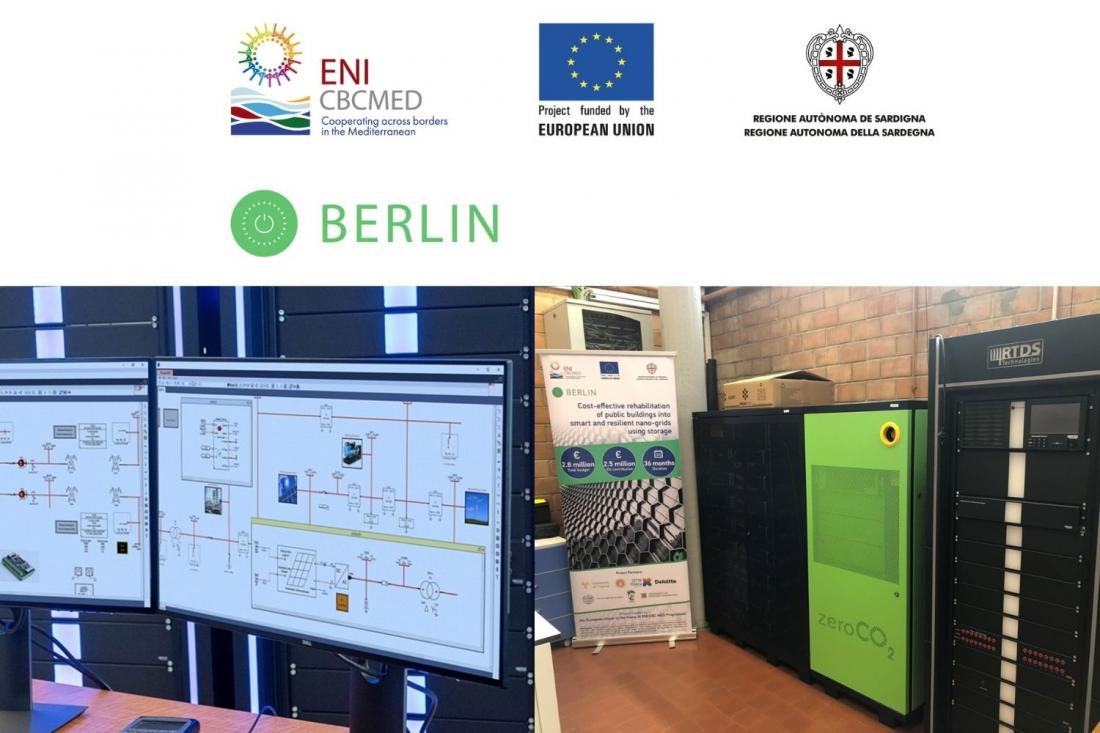BERLIN: The laboratory experimental phase is on - A step closer to the operation of the Italian nanogrid pilot

The Italian nanogrid pilot of the BERLIN project will be functional within the campus of the University of Cagliari. The pilot involves an existing building that hosts a public library, classrooms and offices, and the demonstrative installation will include a rooftop photovoltaic (PV) plant, a Battery Energy Storage System (BESS) and a Building Management System (BMS).
Since the end of 2020 and beginning of 2021, weather station and smart meters were installed respectively in the roof of the building and in the power substation to start the energy audit and the site ambient characterisation (temperature, wind, and solar irradiation).
At the end of 2021, the BESS was purchased and temporarily installed into the Smart Grid Lab of the University of Cagliari. Provided by Energy srl, the storage system is composed of 15 high voltage LFP lithium battery modules, connected in series to achieve a total energy capacity of 71.1 kWh, a power control system (PCS) of 30 kW, and an Energy Management System (EMS) that represents the brain of nanogrid management. In the final pilot installation, the EMS will collect all measurements from the field (energy and power production, energy and power consumption, indoor and outdoor ambient conditions) and selected communications from remote (weather forecast, flexibility requests), to handle BESS and controllable loads for minimizing the electricity bill and providing flexibility services if required. A valuable feature of the purchased system is also the access to the EMS from the cloud by using a dedicated dashboard. This aspect will facilitate the definition of a Living Lab for a safety interaction of students with the nanogrid.
The laboratory experimental phase for developing and testing the control logics to be implemented in the EMS has been recently launched. All measurements, available from the already installed meters, will be entered in a network digital simulator (RTDS) to reproduce the actual behaviour of the nanogrid. Through a dedicated link between the RTDS and the EMS, these logics will be verified in a simulated environment (Hardware in the Loop or Power Hardware in the Loop configurations), without causing trouble to students and university staff that work in the building of the campus involved in the Italian pilot project.
Finally, the tender for the acquisition and installation of the PV plant and the BMS has been completed at the beginning of 2022 and completion of works is expected by the end of April. Hence the Italian nanogrid pilot could be in operation around the mid of the year (2022)!









